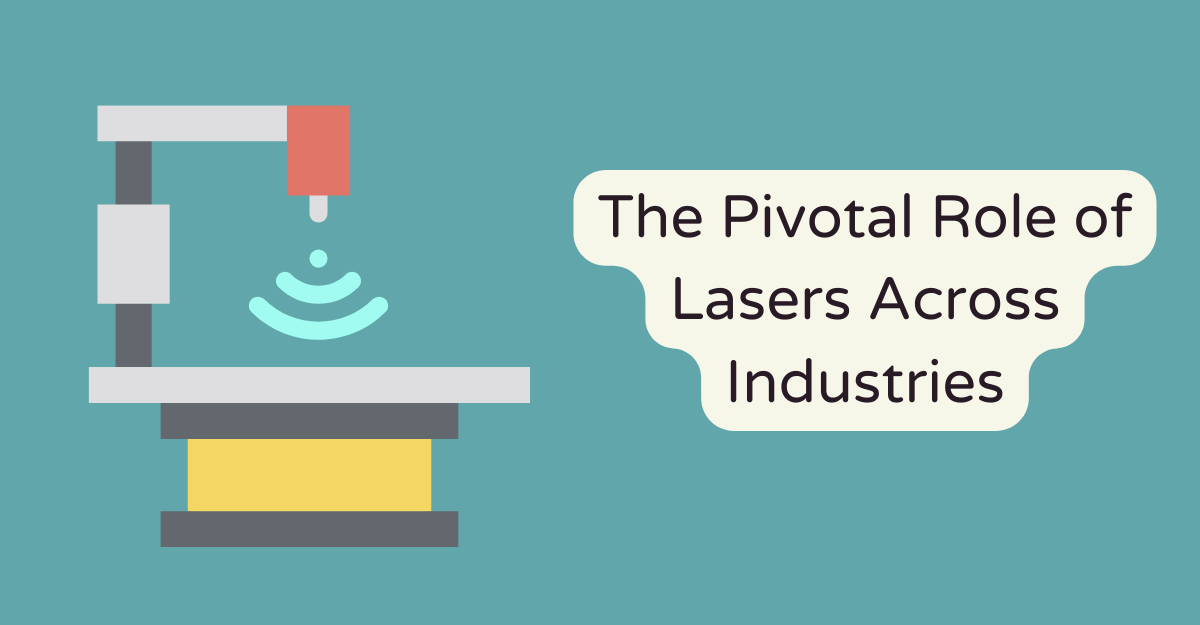
The Pivotal Role of Lasers Across Industries
The advent of laser technology, an acronym for Light Amplification by Stimulated Emission of Radiation, has been nothing short of revolutionary, impacting numerous sectors in profound ways. From healthcare and manufacturing to communication and entertainment, lasers have become indispensable tools, driving innovation, efficiency, and precision. This article explores the diverse applications of lasers across various industries, highlighting their significance and the types of lasers employed.
Healthcare: A Beacon of Hope
In the healthcare industry, lasers have transformed diagnostic and therapeutic procedures, offering non-invasive alternatives to traditional methods.
- Surgical Applications: Lasers are used in various surgical procedures, including eye surgery (LASIK), tumor removal, and cosmetic surgery, due to their precision and reduced healing times. CO2 lasers, with their ability to cut through tissue with minimal bleeding, are commonly used.
- Dentistry: Dental lasers treat a host of issues, from cavity preparation to gum disease treatment and teeth whitening. Diode lasers are frequently utilized for their effectiveness in soft tissue procedures.
- Cancer Treatment: Lasers are employed in photodynamic therapy (PDT) to destroy cancer cells, with certain types of lasers targeting specific cancer cells without harming surrounding tissues.
Manufacturing: Enhancing Efficiency and Precision
Lasers have revolutionized the manufacturing sector, improving product quality, and operational efficiency.
- Laser Cutting and Welding: Used extensively in the automotive and aerospace industries, lasers cut and weld materials with unparalleled precision and speed. Fiber lasers are particularly valued for their efficiency in cutting reflective materials.
- Additive Manufacturing (3D Printing): Laser sintering techniques enable the creation of complex structures by fusing material powder layer by layer, offering a level of detail unachievable by traditional methods.
- Microfabrication: UV lasers are used to create microscopic features in electronics and medical devices, contributing to the miniaturization trend in technology.
Communication: Transmitting Data at the Speed of Light
The communication industry has greatly benefited from laser technology, particularly in the field of fiber-optic communication.
- Fiber-Optic Communication: Lasers transmit vast amounts of data over long distances with minimal loss, facilitating the global internet and telecommunications infrastructure. Semiconductor lasers, due to their compact size and efficiency, are commonly used in these applications.
- Laser-Based Wireless Communication (Li-Fi): Offering a potential alternative to traditional Wi-Fi, Li-Fi uses visible light communication (VLC) for faster and more secure data transmission.
Retail and Consumer Goods: Scanning for Efficiency
Lasers play a crucial role in the retail industry, streamlining operations and enhancing customer experiences.
- Barcode Scanners: Laser scanners read barcodes quickly and accurately, speeding up checkout processes and inventory management. Helium-neon lasers were traditionally used, but now, more compact and energy-efficient diode lasers are more common.
- Laser cutting and Engraving: Personalization of consumer goods through laser cutting and engraving machines offers a high level of detail and durability, making it popular for gifts, awards, and promotional items.
Entertainment and Media: A Spectrum of Creativity
In the realm of entertainment, lasers contribute to immersive experiences and stunning visual displays.
- Laser Shows: High-powered RGB lasers are used in concerts, festivals, and public events to create dazzling light shows, enhancing the visual spectacle.
- Holography: Lasers enable the creation of holograms for security, art, and data storage applications. The coherence and monochromatic properties of laser light are essential for capturing holographic images.
Research and Development: Pushing Boundaries
Lasers are invaluable tools in scientific research, facilitating breakthroughs in physics, chemistry, and biology.
- Spectroscopy: Lasers analyze materials by observing the interaction between light and matter, aiding in the discovery of new elements and compounds.
- Laser Cooling and Trapping: This technique uses lasers to cool atoms to near absolute zero, enabling studies on quantum mechanics and leading to advancements like atomic clocks.
Environmental Monitoring and Conservation
Lasers also play a vital role in environmental protection and monitoring.
- LIDAR (Light Detection and Ranging): Used in geography and seismology to map terrain and detect faults. LIDAR systems use various types of lasers, including Nd:YAG, to measure distances accurately.
- Pollution Detection: Tunable diode lasers analyze the atmosphere for pollutants, providing data critical to environmental conservation efforts.
Conclusion
The impact of lasers across industries is both vast and varied, demonstrating their versatility and potential to drive progress. From enhancing precision in healthcare and manufacturing to revolutionizing communication and entertainment, lasers continue to be at the forefront of technological innovation. As research and development in laser technology advance, we can anticipate even more groundbreaking applications that will further transform our world. The light that lasers cast is not just literal; it symbolizes the illumination of possibilities, guiding us toward a future where the potential of technology is boundless, and its applications are as diverse as the spectrum of light itself.






